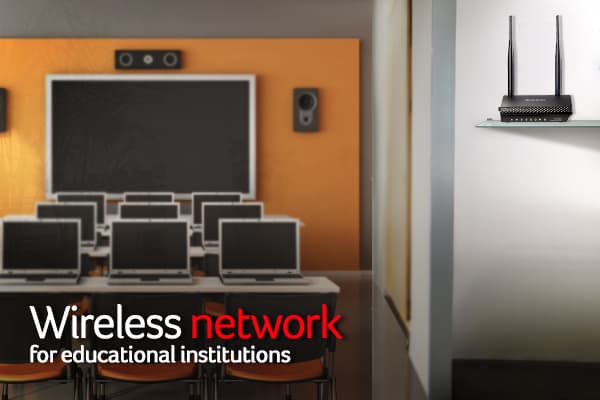Tips for a seamless wireless network for your educational institution
The advancement of technology and the advent of the internet has revolutionized every aspect of our lives, and our educational institutions are no exception. Our classrooms have begun to incorporate technological elements such as desktops, laptops, mobile-learning, video projectors, and wireless internet.
The primary aim of adopting these innovations is to make the environment more interactive and collaborative. Hence, an efficient and seamless wireless network is key for modern schools, as the entire educational experience relies heavily on the efficacy of the wireless network. However, it would be wise to keep in mind that due to the rapid and incessant technological changes, even the most optimum wireless infrastructure can become redundant in 4-5 years.
Here are our tips to optimize the wireless network for your educational institution:
1.Take device power into consideration: It’s an oft-repeated mistake to design a wireless network system by only taking devices such as laptops and desktops into consideration. Most modern portable devices such as smartphones have a lower radio power than laptops and desktops, which inhibits them from communicating efficiently with wireless networks designed primarily for laptops and desktops. In addition to that, your system also needs to account for the radio power capability of devices such as tablets and e-boards, which are quickly becoming integral to modern teaching methods
2. Ensure Roaming facility: The fundamental advantage of upgrading to a wireless network from a wired network system is mobility. Roaming refers to the phenomenon of a device switching its connection from one access point to another, due to physical movement through an environment. This is to ensure that the user doesn’t encounter a break in connectivity. Therefore it’s important to configure your wireless network by tailoring it in a way which serves your infrastructure best.
3.Optimize for smartphones and other mobile devices: Your wireless network design should ideally be optimized for every device; ranging from old computers to the latest handheld gadgets. Mobile optimization is key as mobile devices are being used increasingly to access the internet. For instance, one of our main recommendations would be to design a wireless network system which offers and prioritizes access to the 5 GHz frequency, as it is a less cluttered band than the 2.4 GHz band, which is slowly becoming outdated and also because most modern mobile devices offer dual-band connectivity.
4.Effective capacity design: More often than not, your users would wish to access the internet from more than one device. Educational institutes are encouraging students to carry their own devices, which can disrupt your calculations in terms of capacity.
5.Regulate bandwidth: Understanding which users are getting access to what utilities is important. Similarly, placing a cap on their bandwidth is important too, in order to prevent overuse and maintain a harmonious consumer base. Regulating bandwidth also results in optimum performance of your wireless network.
6.Security: It is advisable to have control over the content which students and other users get access to, to ensure that they are not exposed to inappropriate or explicit content. Our products offer web content filtering options such as ‘Parental Control’- an imperative feature for any educational institution.






